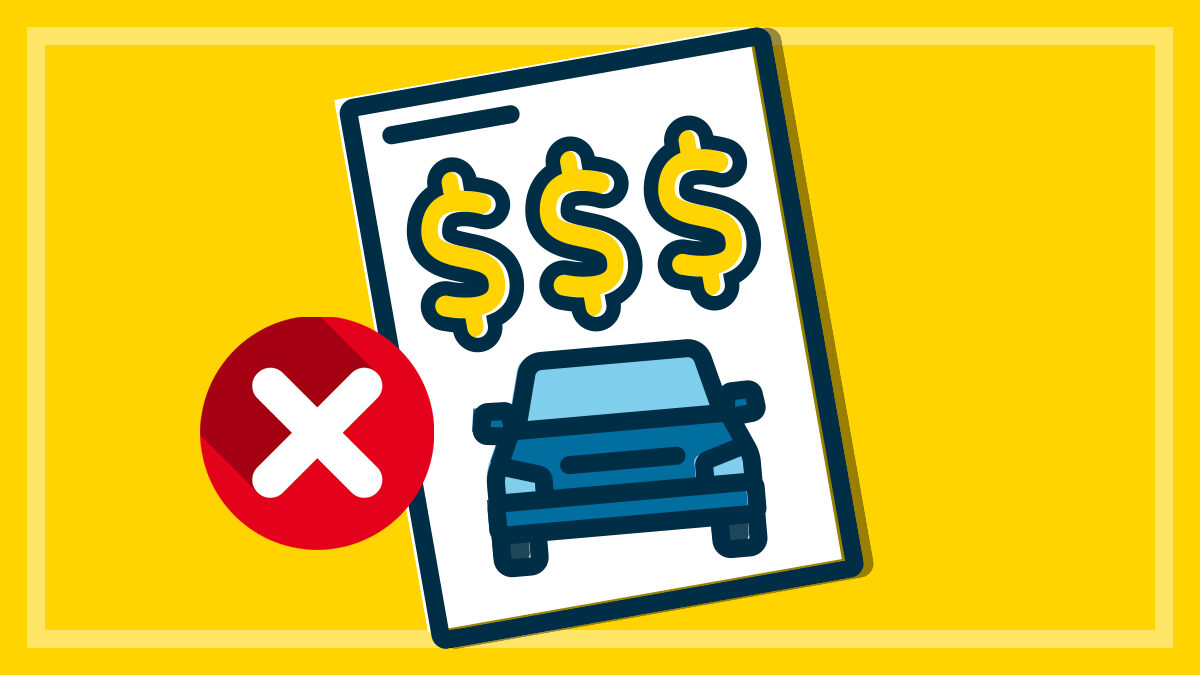Get our independent lab tests, expert reviews and honest advice.
Pros and cons of pet insurance

Need to know
- Pet insurance can give you peace of mind if something goes wrong, but there are pros and cons you should consider before you buy
- On average, annual vet expenses are estimated at $400 for dogs and around $270 for cats – and that's before you factor in medications, surgery and emergency treatment
- We gave the pet insurance industry a Shonky Award in 2019, but since then most insurers have engaged with CHOICE and made positive changes to their policies
There’s no doubt that we Australians love our pets. There are currently an estimated 28.7 million pets in Australia and we have one of the highest pet ownership rates in the world, at approximately 69%.
Of course, love isn’t always enough. To care for our pets, we need to set aside money for food, routine treatments, and unfortunately often treatments for injuries and illnesses.
Bills for major surgery and treatment can run into the thousands of dollars, and there’s no Medicare for pets, so you’ll have to foot the bill. And of course you just can’t predict when your pet will get sick or hurt.
Pet insurance is one way to buffer yourself against unexpected vet bills, so you don’t have to weigh up whether or not to go ahead with surgery or treatment for your four-legged friend.
It’s hard to imagine losing a pet because you can’t afford to pay the vet bills. But is it worth taking out pet insurance for peace of mind? Here are some points to consider.
The pros of pet insurance
Pro: There’s more competition in the market
Up until a few years ago, there were only two major insurers that were underwriters for most pet insurance brands: Hollard and Petplan/Petcover. That meant there weren’t many options for pet owners to choose from, and certainly not very much competition.
Since 2019 a number of insurers, including Trupanion, Vet Choice/Coles (provided by Guild Insurance), Knose, Mad Paws, Pet Circle, Budget Direct and Fetch, have also launched pet insurance products.
This gives pet owners many more options to choose from, so you can shop around for the best deal and find the right level of cover for your pet.
Pro: Pet insurance can give you peace of mind
Having pet insurance means that if an unexpected accident occurs or if your pet needs treatment, some or most of the financial burden will be lifted and you can focus on getting the best care for your pet.
And you’re less likely to face the awful situation of having to euthanise your pet if you can’t afford expensive treatment – an animal lover’s worst nightmare.
In 2017 our insurance paid out over $35,000 on two of our boxers. They have been exceptional
CHOICE supporter
“I don’t want my cats suffering because I lack the cash to do something about it,” one cat owner told us. “I tend to worry about the cost after; just get them well first.”
“We have had four boxer dogs insured over the last 20 years and would not be without pet insurance,” a CHOICE supporter says. “Our experience has been phenomenal. Every claim has been paid promptly, and without investigation or incident.
“In 2017 they paid out over $35,000 on two of our boxers. They have been exceptional and provided us the money to give our pets the very best treatment.”
Pro: Pet insurance has improved
With more competition in the market (and a little push from CHOICE in the form of a 2019 Shonky Award), some restrictions have been lifted, or at least clarified, so pet owners know what they’re getting.
Pre-existing conditions
Previously, if your pet had a particular illness before you took out a pet insurance policy, that illness might have been excluded from their cover – especially if they experience the same symptoms again.
Most insurers will now cover new customers for pre-existing conditions if those conditions are fully cured. (Chronic conditions are still not covered.) With most insurers, the pet needs to be free of symptoms of a particular condition for a period of time to be covered for that condition.
Most insurers will now cover new customers for pre-existing conditions if those conditions are fully cured
“As long as the new health issue is not related or caused by the pre-existing health condition and other conditions are met, it would now be covered in most cases,” says CHOICE pet insurance expert Uta Mihm.
These are some pre-existing health issues that you could be covered for:
- Your dog had gastro as a puppy and develops gastro again a few years later, but for a different reason.
- Your pet has a new, unrelated injury on a previously broken leg that’s now healed.
- After a benign (non-cancerous) lump was removed, your pet develops a different type of lump.
Of course this differs between insurers, so check your insurer’s policies to make sure you know where you stand. For more details on the cover from different underwriters, see our pet insurance buying guide.
Improvements to other restrictions
Many policies have changed for the better, removing unfair restrictions such as:
- a pet not being covered if they were vaccinated against a particular illness but became sick with that illness. This is now covered by the majority of policies
- out-of-hours emergency care not being covered. Previously in some cases cover was only granted for treatment during business hours, but now many policies cover the full cost.
Pro: Claims can be quick and easy
If your vet and insurer are set up for pre-approval and electronic claiming, lodging a claim and being reimbursed can be fuss-free and quick.
“Claiming in the past was horrible – lots of paperwork. It was almost as though they were trying to make claiming hard,” says one pet owner. “It’s much better now that it’s all electronic straight from the vet.”
“It’s getting easier to claim these days,” another pet owner says. “My vet can send everything electronically through to the insurer.”
Pro: You can add on routine care cover
The first year of your puppy or kitten’s life can be expensive. Things like desexing, microchipping and council registration are usually one-off fees that add up pretty quickly. And that’s before you add in routine care vaccinations and worm and flea treatments.
Routine care cover is an optional add-on that can take some of the sting out of paying all these costs at once.
“Routine care cover isn’t very expensive to add on – it’s usually around $100 a year,” says Uta. “If you can make use of it, it can offer good value – especially in the first year of your pet’s life.”
You can always cancel routine care cover after your pet turns one if you don’t feel you need it as they get older.

The cons of pet insurance
Con: Pet insurance can be expensive
Owning a pet comes with many financial responsibilities. On average, annual vet expenses alone are estimated to cost close to $400 for dogs and around $270 for cats – and that’s before you factor in medications, surgery and emergency treatment.
With all these potential bills on your pet ownership horizon, pet insurance may seem like a wise choice. But with many providers slugging you with premiums of anywhere from $180 up to $4500 per year, and many of us already struggling with the rising cost of living, it can get expensive.
Various factors can affect how much your pet will cost to insure. One of these is your pet’s breed, which can have serious implications on their health, welfare and subsequent medical costs throughout their lifetime, and can make a huge difference price-wise.
For future pets I would consider simply putting some money aside in a separate bank account instead of purchasing pet insurance again
CHOICE supporter
“There can be a big difference in price between dog breeds. For example, French bulldogs are really expensive to insure due to the many genetic health complications associated with this breed,” Uta says.
Putting aside cash in a separate high-interest bank account specifically for vet expenses may be a better option and can give you more security, as you’ll always have the money available, whereas your insurer could knock back your claim.
“I did have a successful claim for a cat who, sadly, had to be euthanised in September 2020. The total vet costs exceeded $3500, so it would have been a lot out of pocket if I wasn’t insured,” says a pet-loving CHOICE supporter.
“That said, for future pets I would consider simply putting some money aside in a separate bank account instead of purchasing pet insurance again.”
Con: Price increases could make pet insurance unaffordable
The way most policies are structured means that premiums increase as your pet ages.
“Premiums are typically lower when opening a policy for a younger pet,” says Uta.
“I changed pet insurers in the last 12 months due to my original insurer having significant premium increases,” one pet owner told us.
“I cancelled our policy after five years because the premium went up substantially after each claim,” says another pet parent. “Not worth having.”
Another CHOICE supporter told us: “The price of our pet insurance premiums increased from $448 to $542 per year. For a very young dog that’s outside of the ‘risk age’ this increase seemed very excessive. I also have another dog (a 6 year-old kelpie) and two cats that did have insurance; but I have not renewed them.”
Con: You need to buy it when your pet is young
“If you want to take out a policy, it’s best to do so as soon as possible, as the younger your pet is, the less chance they’re going to have a pre-existing condition that will never be covered,” Uta says.
It’s a good idea to take out insurance from when your pet is as young as three months old. (And remember that add-on routine care cover can come in handy in their first year of life.)
Also, once your pet is eight years old, you’ll have a much smaller selection of policies available to choose from, and usually the only policies available have just accident-only cover.
Con: Finding cover for rescue pets can be difficult
One pet owner found out the hard way that insuring a rescue animal can be all but impossible.
“I am unable to insure my dog as she was a rescue dog. Because she’s of uncertain age and had no medical history I was unable to take out pet insurance,” they told us.
“Since then she has had an ECG, ultrasound and blood tests every three months for liver problems. Ironically, with my previous dog I didn’t need to access her insurance as she had no health problems!”
Con: Your cover may change
Pet insurance providers currently have no legal obligation to maintain the competitiveness of your policy and can make any changes they like when you renew annually. These changes may include:
- premium increases
- reduction in coverage percentages
- added exclusions
- reduced payment limits and sublimits.
This can make it difficult to budget for costs associated with your pets, and means you can’t be sure your pet will be covered for certain conditions or incidents as they age.
And while premiums increase with age, cover could decrease.
Some policies have conditions where they’ll pay, for example, 100% of the claim when your pet is young (usually as long as they’re aged below eight, but with some policies and dog breeds, it can be as young as three).
But as your pet ages, this payment can drop to, say, 80%, and you’ll have to foot the rest of the bill. This isn’t helpful when you consider that your pet is likely to need more vet care as they grow older.
Con: Exclusions, low limits and caps
The policies in our pet insurance comparison are either basic accident-only cover; more comprehensive accident and illness cover; illness-only cover; or they only cover some specifically stated events.
Comprehensive policies usually cover surgery, hospitalisation and medicines, but things such as dental care, vaccinations, desexing and preventative treatment are usually not included.
You should always check the amount of co-payments, excesses and caps. For example, most policies have a cap of around $300 on veterinary consultation fees (which you’ll spend quite quickly if your pet has a chronic illness).
Things such as dental care, vaccinations, desexing and preventative treatment are usually not included
Be aware that some policies can have sublimits for certain items. So, your policy may have a $12,000 overall annual limit, but a sublimit of $1000 for things like treatment after a tick bite, or $2600 for cruciate ligament surgery (and these can be particularly expensive to treat).
Uta says: “There is also often a cap on cover for the treatment of swallowing objects. Some policies have unlimited cover for this, but some will only cover you for once or twice a year – not ideal if your pup has a tendency to ingest foreign objects.”
Con: Getting insurers to pay up
While some insurers make lodging claims easier with electronic lodgement processes, having that claim accepted can be quite a different matter.
One pet owner we spoke to spent nearly six months trying to get their insurer to accept a claim, only to have the insurer lose the paperwork and claim that the vet didn’t send the correct documentation for the injury, then claim that the injury was elective surgery.
“I wrote numerous letters and made numerous phone calls trying to clear the matter up,” they say. “Needless to say, as soon as they finally paid the claim, I cancelled the insurance.
One pet owner we spoke to spent nearly six months trying to get their insurer to accept a claim
“Then [the insurer] stated that they would continue to debit my account for the remaining premiums for the year (several months’ worth). After further complaints and some intervention, they finally reimbursed me the premiums they had taken from me after I cancelled the policy.”
Another pet owner told us: “They tried to not pay out for an ear infection for our dog as he has a grass allergy on his torso – they claimed it was preexisting. We noted that a skin allergy is different to possible ear mites and they paid up.”
How to decide if pet insurance is for you
While pet insurance has improved, you still need to work out if it’s worth it for your circumstances.
To help with the decision, Uta suggests the following steps:
- Talk to your vet. Ask what conditions your pet could develop later in life and what the treatment would cost.
- Get quotes from several insurers. Compare cover, cost, excess, cover percentage and sublimits.
- Consider whether it would be better to set up a special bank account and save the pet insurance premiums.
- If you are going to take out insurance, consider doing so early in your pet’s life, before they’ve developed any health conditions.
- If your new pet still needs council registration, desexing and vaccinations, check if the pet insurer offers optional routine care cover for those. The extra cost may be worth your while, especially for the first year of cover.






